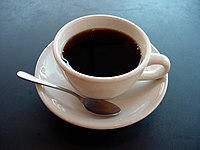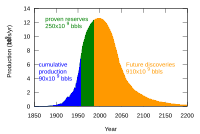
Retinoic acid co-treatment aggravates severity of dioxin-induced skin lesions in hairless mice via induction of inflammatory response.
Sign Up to like & getrecommendations! Published in 2018 at "Biochemical and biophysical research communications"
DOI: 10.1016/j.bbrc.2018.10.126
Abstract: Exposure to toxic halogenated polyaromatic hydrocarbons, of which 2,3,7,8-tetrachlorodibenzo-p-dioxin (TCDD) is the most potent, induces diverse skin pathologies in humans, including chloracne, hyperkeratosis, hamartomas, etc. While the toxic effects of TCDD have been extensively studied,… read more here.
Keywords: tcdd induced; tcdd; treatment; hairless mice ... See more keywords

Dietary immature Citrus unshiu alleviates UVB- induced photoaging by suppressing degradation of basement membrane in hairless mice
Sign Up to like & getrecommendations! Published in 2020 at "Heliyon"
DOI: 10.1016/j.heliyon.2020.e04218
Abstract: Ultraviolet (UV) irradiation induces physiological and morphological skin damage, resulting in skin dryness, wrinkle formation, and loss of elasticity. The basement membrane (BM) has been shown to play crucial roles in binding epidermis to dermis… read more here.
Keywords: citrus unshiu; basement membrane; hairless mice; uvb induced ... See more keywords

A metabolite of dietary glucosylceramide from pineapples improves the skin barrier function in hairless mice
Sign Up to like & getrecommendations! Published in 2017 at "Journal of Functional Foods"
DOI: 10.1016/j.jff.2017.01.017
Abstract: Abstract Glucosylceramide (GlcCer) has various effects such as skin moisturizing, improvement of atopic dermatitis, and enhancement of skin barrier function. However, the mechanism of GlcCer on skin barrier function remains unclear. In this study, the… read more here.
Keywords: glccer; barrier function; hairless mice; skin barrier ... See more keywords

Korean Red Ginseng extract ameliorates melanogenesis in humans and induces antiphotoaging effects in ultraviolet B–irradiated hairless mice
Sign Up to like & getrecommendations! Published in 2020 at "Journal of Ginseng Research"
DOI: 10.1016/j.jgr.2019.05.003
Abstract: Background Panax ginseng is a marvelous herbal remedy for all ailments of body. That may be why it is called Panax, which means “cure for all”. Melanin is a pigment that gives color to our… read more here.
Keywords: ginseng extract; ginseng; hairless mice; skin ... See more keywords

FGF-2-containing dalteparin/protamine nanoparticles (FGF-2&D/P NPs) ameliorate UV-induced skin photoaging in hairless mice
Sign Up to like & getrecommendations! Published in 2018 at "Journal of Plastic Surgery and Hand Surgery"
DOI: 10.1080/2000656x.2018.1523178
Abstract: Abstract UVB exposure penetrates deeply into the dermis to alter skin barrier function, which is a primary factor in skin photoaging. We previously reported that dalteparin and protamine nanoparticles (D/P NPs) are effective carriers of… read more here.
Keywords: fgf nps; fgf; skin photoaging; hairless mice ... See more keywords

Wheat Extract Oil (WEO) Attenuates UVB-Induced Photoaging via Collagen Synthesis in Human Keratinocytes and Hairless Mice
Sign Up to like & getrecommendations! Published in 2020 at "Current Developments in Nutrition"
DOI: 10.1093/cdn/nzaa045_020
Abstract: The efficacy of wheat extract oil (WEO), standardized to glucosylceramides, for protecting against ultraviolet B (UVB)-induced damage of skin barrier function was assessed using the SHK-1 hairless mouse model and two human skin cell lines,… read more here.
Keywords: extract oil; oil weo; wheat extract; hairless mice ... See more keywords

Comparison of Moderate and High Energy of a Nano-Fractional Radiofrequency Treatment on a Photoaging Hairless Mice Model
Sign Up to like & getrecommendations! Published in 2018 at "Dermatologic Surgery"
DOI: 10.1097/dss.0000000000001362
Abstract: BACKGROUND Fractional radiofrequency (FRF) has been widely used in skin rejuvenation. To explore optimal settings, it is important to compare different treatment parameters. OBJECTIVE This study was designed to compare the effect of moderate-energy and… read more here.
Keywords: fractional radiofrequency; energy; high energy; treatment ... See more keywords

Does systemic hydrochlorothiazide increase the risk of developing ultraviolet radiation‐induced skin tumours in hairless mice?
Sign Up to like & getrecommendations! Published in 2022 at "Experimental Dermatology"
DOI: 10.1111/exd.14703
Abstract: Hydrochlorothiazide (HCTZ) is a frequently prescribed diuretic that exhibits photosensitizing properties. It is used to treat hypertension and edema. Dermato‐epidemiological studies in various populations have linked HCTZ treatment with increased risk of particular types of… read more here.
Keywords: ultraviolet radiation; hairless mice; group; hydrochlorothiazide ... See more keywords

Protective Effect of Edible Bird's Nest in the Immune-senescence Process of UVB-irradiated Hairless Mice.
Sign Up to like & getrecommendations! Published in 2021 at "Photochemistry and photobiology"
DOI: 10.1111/php.13564
Abstract: Edible bird's nest (EBN) is a nutritious food with many beneficial effects, including protecting cells against oxidation and infection due to wounds, bacteria, or viruses. EBN has shown anti-aging, anti-inflammatory, and wound-healing properties in skin… read more here.
Keywords: irradiated hairless; hairless mice; mice; bird nest ... See more keywords

Analyzing the innate immunity of NIH hairless mice and the impact of gut microbial polymorphisms on Listeria monocytogenes infection
Sign Up to like & getrecommendations! Published in 2017 at "Oncotarget"
DOI: 10.18632/oncotarget.22051
Abstract: Spontaneous mutant hairless (HL) mice are often used to study hair growth and hair follicle development, and they often exhibit immune dysfunctions. Listeria monocytogenes, an important food-borne bacterium, has been used in animal models to… read more here.
Keywords: mice impact; nih mice; infection; hairless mice ... See more keywords

Nymphoides peltata Root Extracts Improve Atopic Dermatitis by Regulating Skin Inflammatory and Anti-Oxidative Enzymes in 2,4-Dinitrochlorobenzene (DNCB)-Induced SKH-1 Hairless Mice
Sign Up to like & getrecommendations! Published in 2023 at "Antioxidants"
DOI: 10.3390/antiox12040873
Abstract: Nymphoides peltata is widely used pharmacologically in Traditional Chinese Medicine and Ayurvedic medicine as a diuretic, antipyretic, or choleretic and to treat ulcers, snakebites, and edema. Previous studies have shown that phytochemicals from N. peltata… read more here.
Keywords: skh hairless; dncb induced; hairless mice; npr extract ... See more keywords